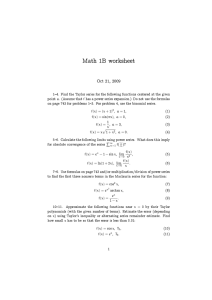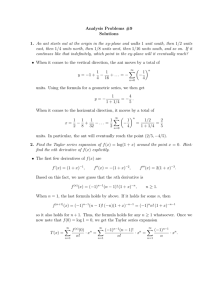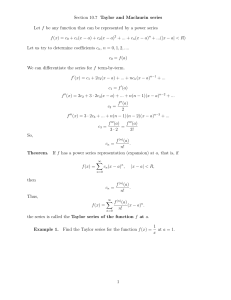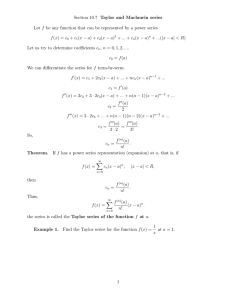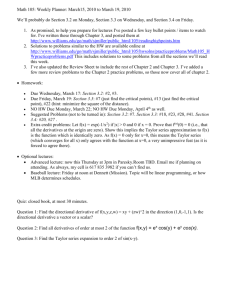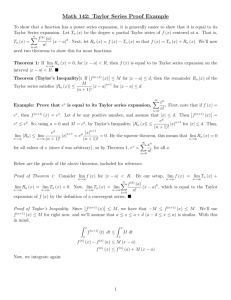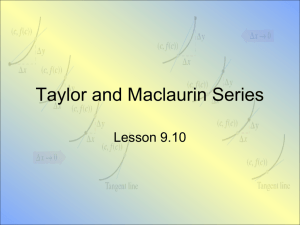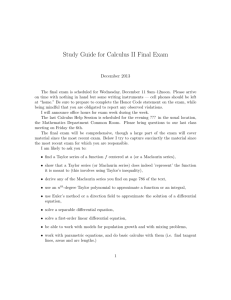TaylorSeries - math.fme.vutbr.cz
advertisement
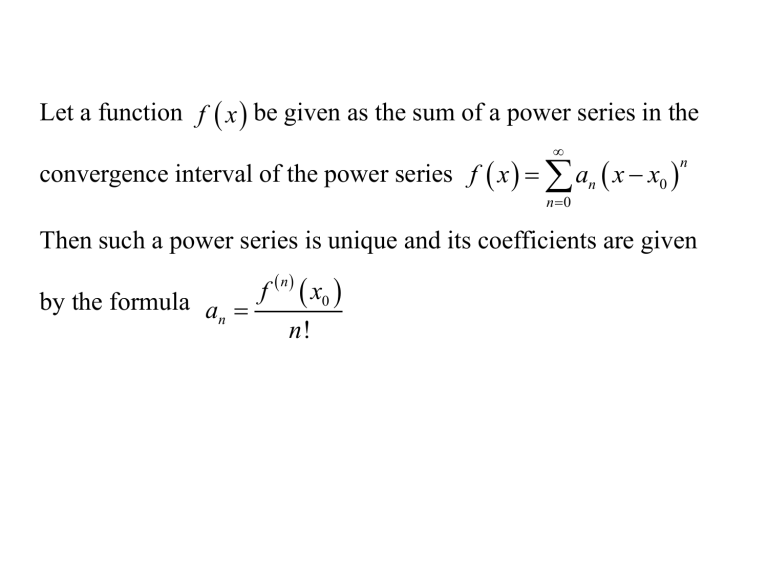
Let a function f x be given as the sum of a power series in the convergence interval of the power series f x an x x0 n n 0 Then such a power series is unique and its coefficients are given by the formula a n f n x0 n! If a function f x has derivatives of all orders at x0, then we can formally write the corresponding Taylor series f x f x0 f ' x0 1! x x0 f '' x0 2! x x0 2 f ''' x0 3! x x0 The power series created in this way is then called the Taylor series of the function f x . A Taylor series for MacLaurin series. x0 0is called 3 There are functions f (x) whose formally generated Taylor series do not converge to it. A condition that guarantees that this will not happen says that the derivatives of f (x) are all uniformly bounded in a neighbourhood of x0. There are functions with a Taylor series that, as a power series, converges to quite a different function as the following example shows: Example f x e 1 x2 for x 0, f 0 0 For x 0 , we have x12 d e 1 2 2 e x f ' x dx x3 2 1 x 3e x 2 and for x = 0: 1 e x 0 1 t 1 x f ' x lim lim 1 lim 1 lim t 2 lim t 2 0 x 0 x 0 x 0 t t x e 2te 2 2 x x xe e 1 2 In a similar way, we could also show that 0 f 0 f ' 0 f '' 0 f k 0 This means that the Taylor series corresponding to f (x) converges to a constant function that is equal to zero at all points. But clearly, e 1 x2 0 for any x 0 . Taylor series of some functions: x x 2 x3 e 1 1! 2! 3! x x3 x5 x 7 sin x x 3! 5! 7! x2 x4 x6 cos x 1 2! 4! 6! x 2 x3 x 4 ln 1 x x 2 3 4
